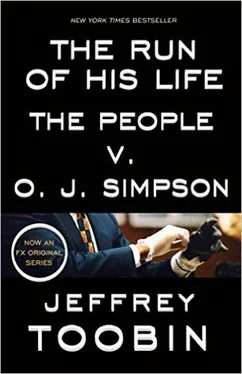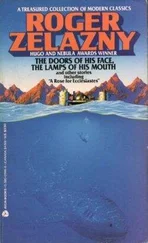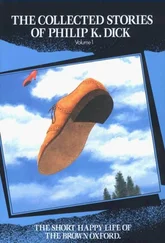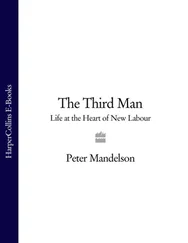Parker and his wife never had children, and the chief remained aloof from most of his colleagues on the force. He did, however, take a special shine to the young officer who was assigned to be his personal chauffeur-Daryl Gates. Together the two men refined a theory of “proactive policing,” which featured relentless confrontations between heavily armed officers and the hostile populations they patrolled. Parker and Gates came of age in an era when white cops didn’t have to rein in their feelings about African-Americans. When Watts exploded in 1965-a rebellion set off by a confrontation between a black motorist and a uniformed officer of the California Highway Patrol-Parker compared the black rioters to “monkeys in a zoo.” A year later, a black man named Leonard Deadwyler was rushing his pregnant wife to the hospital when he was stopped by police for speeding. In the ensuing confrontation, the unarmed Deadwyler was shot dead. “Police are not supposed to stand by and watch a car speeding down the street at eighty miles per hour,” Parker explained. “[The officer] did something he thought would successfully conclude a police action. All he is guilty of is trying to do his job.”
True to the intent of the civil-service law, Parker served until he died, and Gates took over as chief in 1978. The selection process that led to Gates’s appointment seemed designed as a direct affront to the city’s black community: To head the internal review of candidates for the job, the LAPD brought in Curtis LeMay, the far-right-wing former air force general who had served as George Wallace’s running mate in 1968 and earlier had promised to bomb North Vietnam “back to the Stone Age.”
After Gates took over, the list of black victims of the LAPD grew ever longer. In 1979 Eulia Love, a thirty-nine-year-old black widow who was late in paying her gas bill, hit a meter reader on the arm with a garden shovel. The utility man summoned police officers, who, rather than defuse the situation, shot Love dead at pointblank range. In 1982, after a number of African-American men died from police choke holds, Gates observed that the deaths might have been caused by the distinctive physiology of the black victims: “We may be finding that in some blacks when [the choke hold] is applied, the veins or arteries do not open up as fast as they do on normal people.” It mattered little that Los Angeles had had a black mayor, Tom Bradley, since 1973. The LAPD answered to no one.
A raid on a suspected narcotics operation in August 1988 may have been the paradigmatic LAPD operation. About eighty police officers (and one helicopter) swooped in on four apartments in two small buildings at Thirty-ninth Street and Dalton Avenue, on the periphery of the South Central district. The officers, armed with shotguns and sledgehammers, barreled through the rooms. They tore plumbing out of the walls, ripped a stairway from its moorings, pulled carpet from the floor, destroyed furniture and appliances, and kicked and punched the stunned residents. For all the terror it unleashed, the raid netted only two minor drug arrests. Nevertheless, the officers on the scene did find reasons to take thirty-two residents of the complex back to the local precinct, where the captives were forced to whistle the theme song from the 1960s situation comedy The Andy Griffith Show . Before they left the Dalton homes, some officers had spray-painted the words LAPD RULES on the walls.
Less than three years later, a passerby videotaped LAPD officers beating unarmed motorist Rodney King. On April 30, 1992, the four officers who administered the beating were acquitted in a trial that had been moved from downtown Los Angeles to the rustic (and largely white) Simi Valley. As it had in 1965, the city once again erupted in a riot of protest, rage, and frustration. A blue-ribbon commission, headed by future secretary of state Warren Christopher, after studying the King beating and its aftermath, delivered a deadpan verdict that was many years in coming. “The problem of excessive force is aggravated by racism and bias within the LAPD,” the Christopher commission concluded. “These attitudes of prejudice and intolerance are translated into unacceptable behavior in the field.”

At 12:30 A.M. on June 13, Officer Robert Riske telephoned news of the two homicides to his supervisor, David Rossi, the sergeant in charge of the West Los Angeles station at the time. Rossi promptly made a half dozen phone calls around the LAPD chain of command, setting in motion the police response to the crimes. In an ordinary case, even a homicide, Rossi would probably have made only two calls-to the detective on duty, who would investigate the scene, and to his own commander. But Rossi’s supervisor immediately told him to reach higher in the command structure because of, as Rossi later put it, “the possible notoriety of this particular incident.”
A steady stream of officers began converging on the murder scene at 875 South Bundy. Sergeant Marty Coon was the first supervisor to arrive. Riske and his partner put up yellow crime-scene tape to block access to this block on Bundy and to the back alley. Additional officers came to make sure no one passed through the tape. A squad car arrived to take the two children to the West L.A. station, and two more officers began walking through the alley, searching garbage pails for possible evidence and knocking on doors in an effort to find witnesses. By the time David Rossi arrived at the scene at 1:30 A.M., the tape was up and the scene quiet. Moments later, Rossi’s boss, Captain Constance Dial, arrived as well. Riske took Coon and Rossi for a quick tour. Standing on the landing by the front door, Rossi saw what Riske had seen: the two bodies, the trail of blood heading toward the alley, the envelope, the knit hat, and the single leather glove.
Before leaving the station for the crime scene, Rossi had reached the chief of the West L.A. detective-homicide unit that would be in charge of the investigation, Ron Phillips, at home. A twenty-eight-year veteran of the LAPD, Phillips no longer investigated crimes himself; rather, it was his responsibility to visit the crime scene, talk with the uniformed officers who had discovered the bodies, and assign the case to one of the four homicide detectives who worked under him.
In the early morning hours of June 13, Phillips’s on-call detective for the next case was Mark Fuhrman, who would be assisted by his more junior partner, Brad Roberts. Phillips called Fuhrman and Roberts at their respective homes and told them to meet him at the West L.A. station. Roberts couldn’t get to the station as quickly as the other two, so when Phillips and Fuhrman met there at shortly before 2:00, they took an unmarked police car and proceeded together to the murder scene. They arrived at about 2:10 A.M. As Fuhrman approached the scene, he wore a shirt and tie but no jacket. According to the crime-scene log, Detective Mark Fuhrman was the seventeenth police officer to arrive at 875 South Bundy Drive.
Riske met Phillips and Fuhrman at the front of the house on Bundy and took them on a tour of the scene. They walked together toward the front door and hunched together in the shrubbery to the left of the pathway while Riske shined his high-powered flashlight on the female victim’s body. But because the front pathway was so covered with blood, the three men decided not to try to tiptoe around it and up the stairs, as Riske had done when he first discovered the scene, but instead walked around the block, via Dorothy Street, to the back alley. Rossi was waiting for them in the alley, and he pointed out some blood on the rear gate to Phillips. Riske, Phillips, and Fuhrman then entered the house through the garage, passing a black Jeep Cherokee and a white Ferrari, and then walked up a short flight of stairs. On the bannister next to the stairs there was a partially eaten cup of Ben & Jerry’s ice cream-Chocolate Chip Cookie Dough in flavor.
Читать дальше













